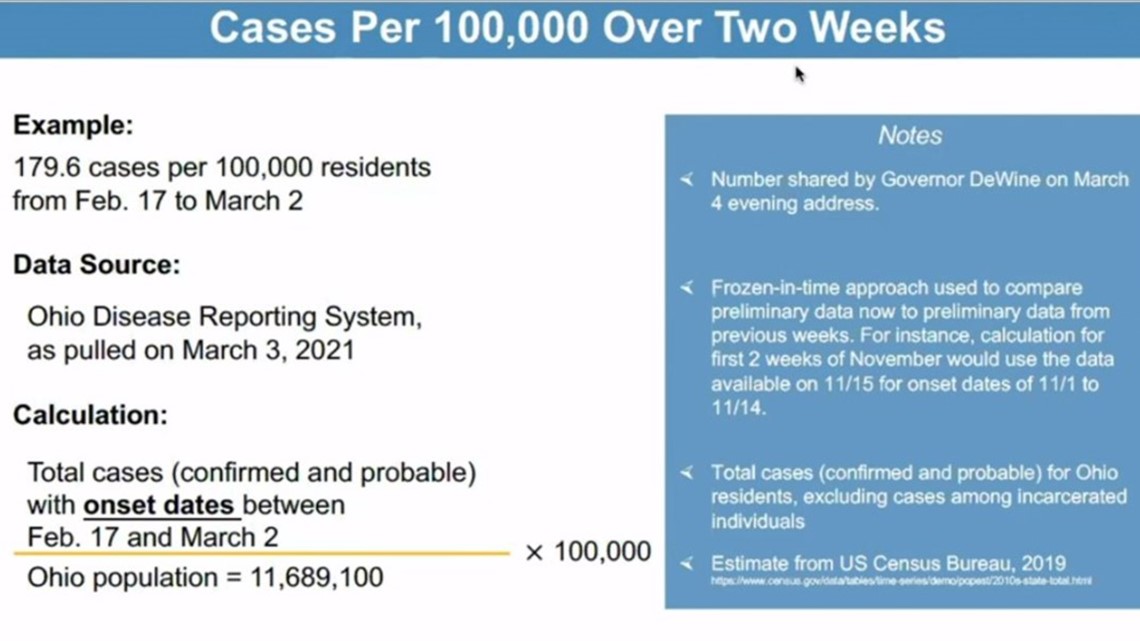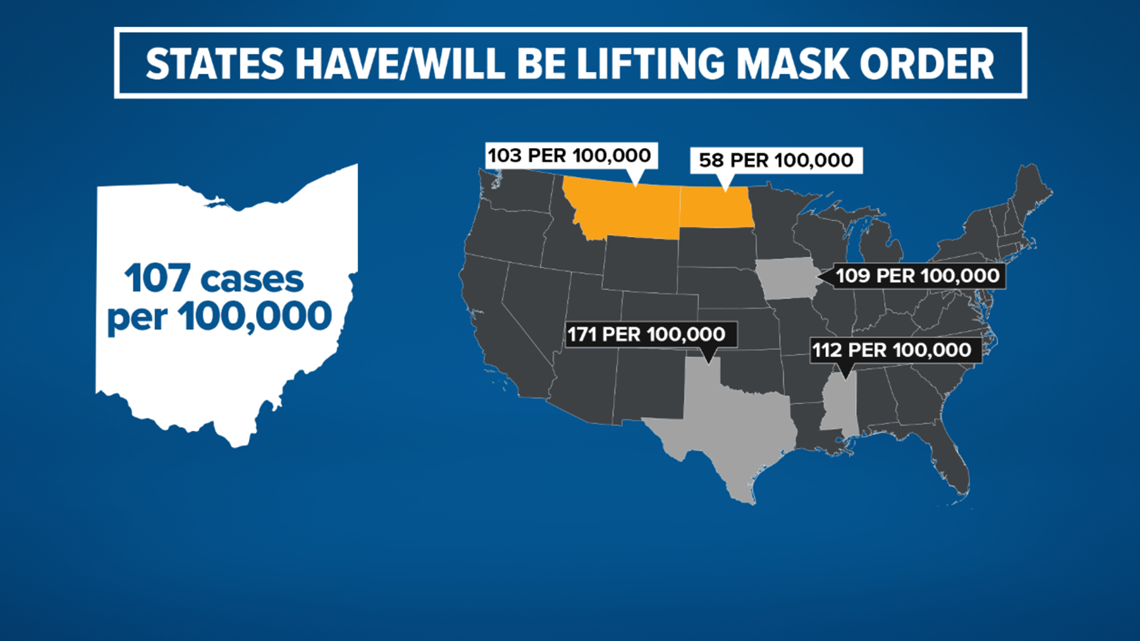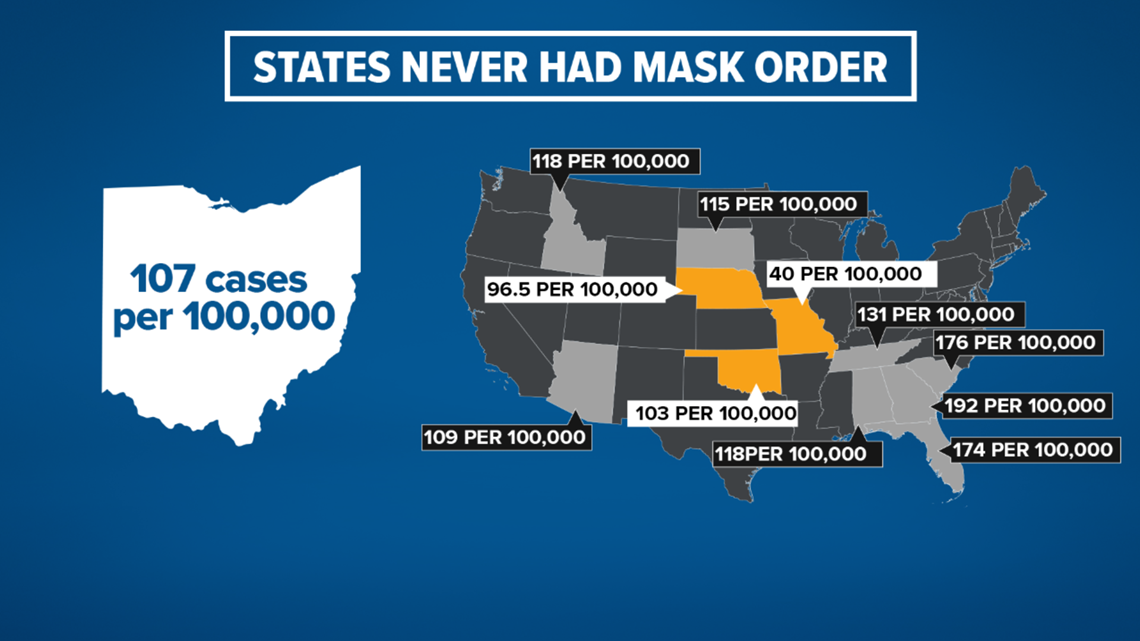The Ohio Department of Health laid out details on how the state can reach the threshold needed to remove the state's COVID-19 health orders.
On Thursday, Gov. DeWine announced when the number of cases in Ohio drops to 50 per 100,000 people for two weeks, all of the health orders will come off.
Dr. Bruce Vanderhoff, the state's chief medical officer, said successful vaccinations, wearing masks and social distancing will be key in reaching that goal.
While he is optimistic about the path Ohio has been on in reducing cases, he cannot predict when the state will reach its goal and urged everyone to still be cautious.
"We can't let up when we get there. If we are still not being careful, using good judgment, we could see this thing go the wrong direction," Dr. Vanderhoff said.
If the threshold is met, Dr. Vanderhoff said ODH will likely still provide guidelines for the pandemic.
How cases per 100,000 Ohioans is calculated:
When it comes to calculating cases per 100,000, ODH takes the number of new cases reported statewide within two weeks and divides it by Ohio's population, which is approximately 11,689,100. That number is then multiplied by 100,000 which gives them the number of cases per 100,000.


How we reach the threshold:
To reach DeWine's goal of 50 cases per 100,000, Ohio would need approximately 5,845 COVID-19 cases over a two-week period.
On March 4, the state has 179 cases per 100,000 Ohioans. The state reported 20,999 total cases over the last two weeks.
How is Ohio different than other states?
If we use CDC data that looks at a seven-day average of cases (Ohio uses a two-week average), the state's cases per 100,000 are 107.


In states where mask orders have been or about to be lifted, nearly all have cases higher than Ohio including:
- Texas: 171 cases per 100,000
- Mississippi: 112 cases per 100,000
- Iowa: 109 cases per 100,000
Only Montana and North Dakota have lower cases per 100,000 residents with 103 and 58, respectively.
Here is another comparison. If you look at the state’s that never had a mask order (Alaska, Arizona, Florida, Georgia, Idaho, Oklahoma, Missouri, Nebraska, South Carolina, South Dakota and Tennessee) all of them except Oklahoma, Missouri and Nebraska have higher case counts per 100,000 residents than Ohio.


Dr. Vanderhoff explained why Ohio is different.
“I think what we have laid out is a very understandable, logical approach to responsibly reaching a threshold where we can say it's clear, that we are gaining enough immunity that we can begin to do what we all want is lift some of these mandatory restrictions,” Dr. Vanderhoff said.

